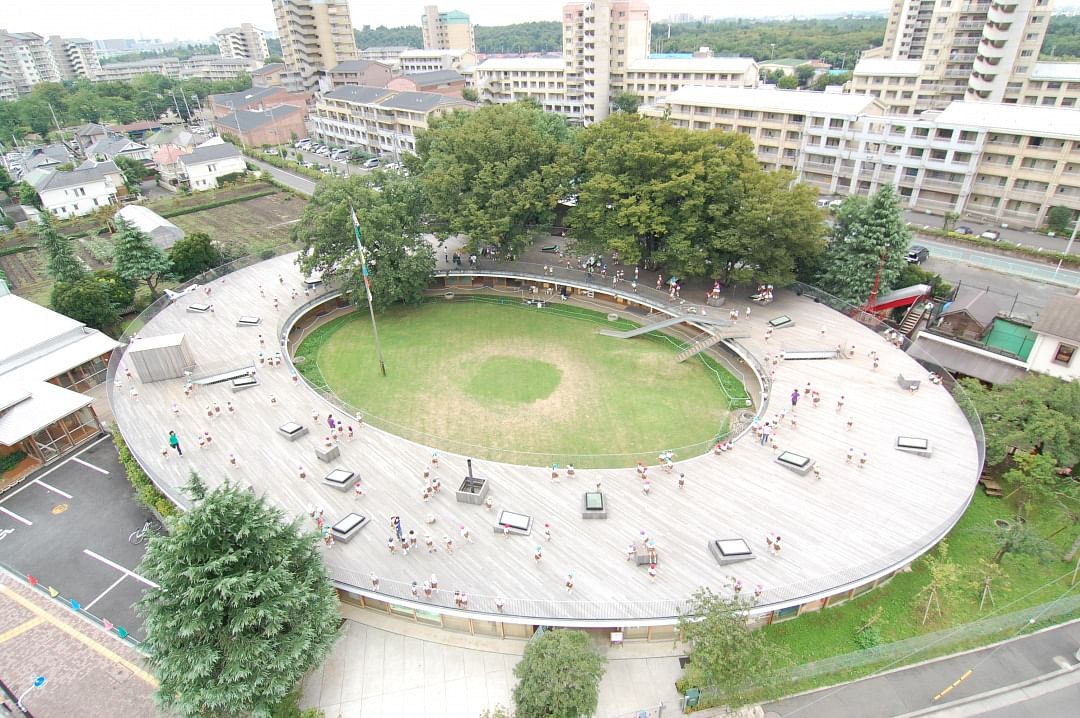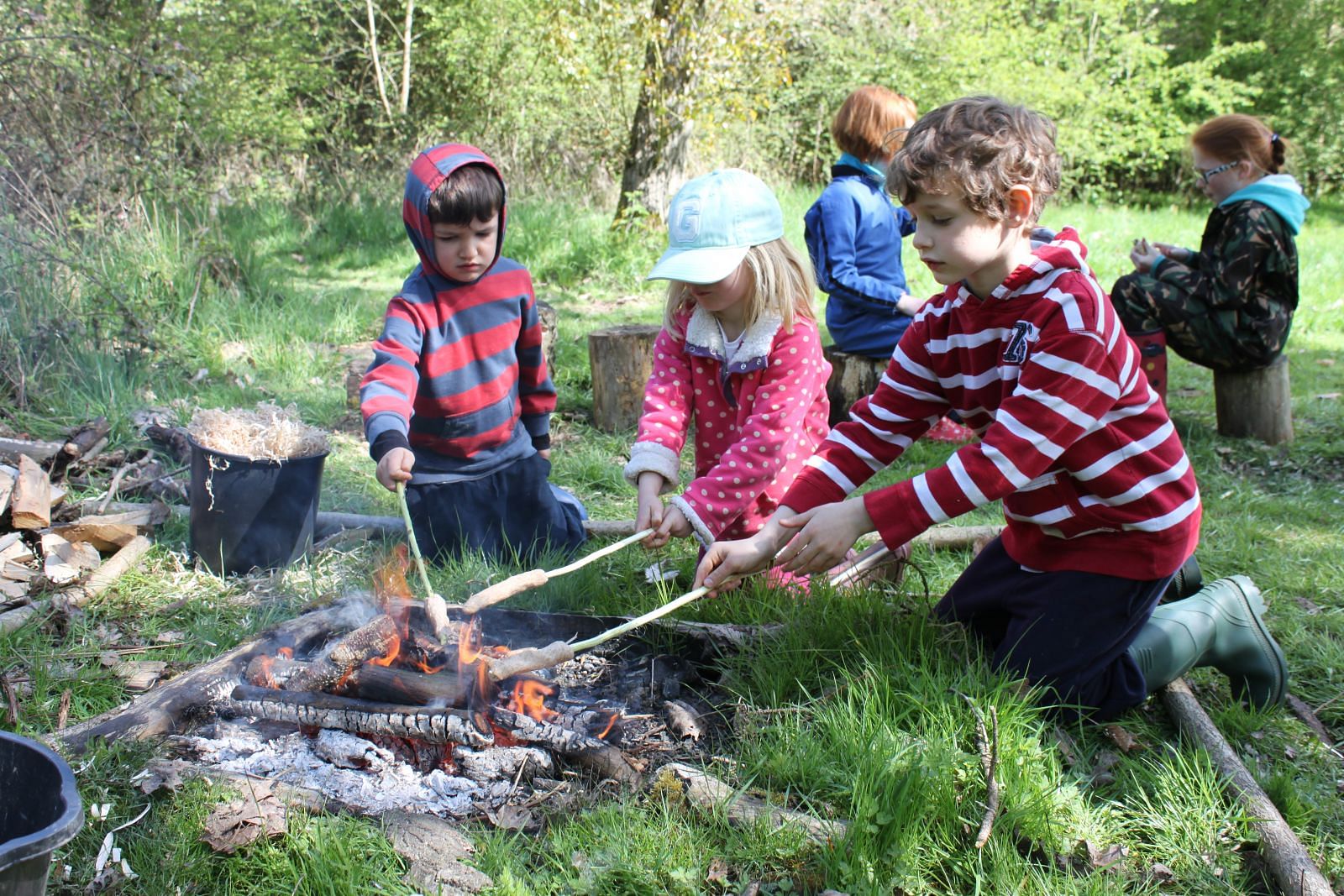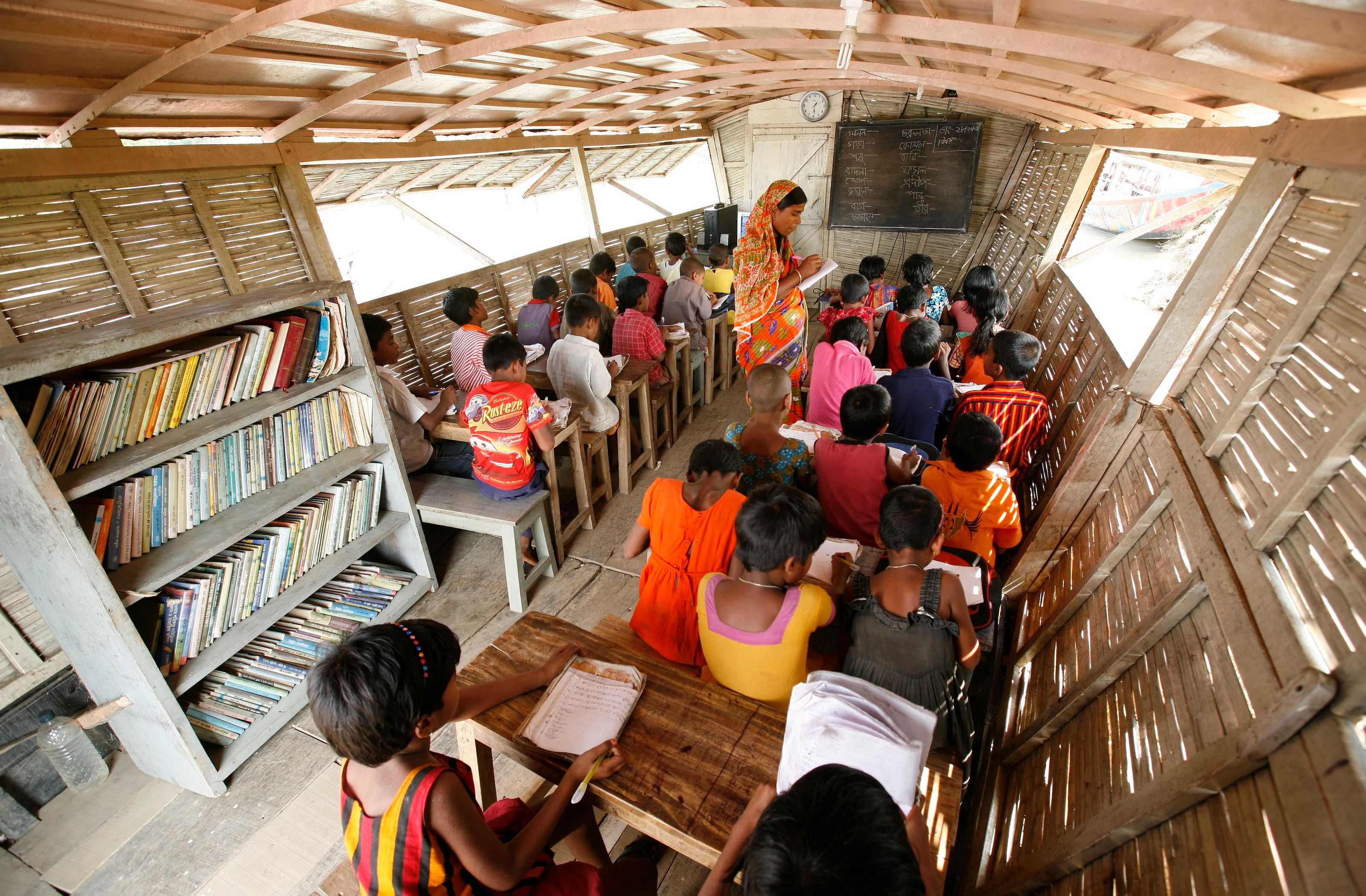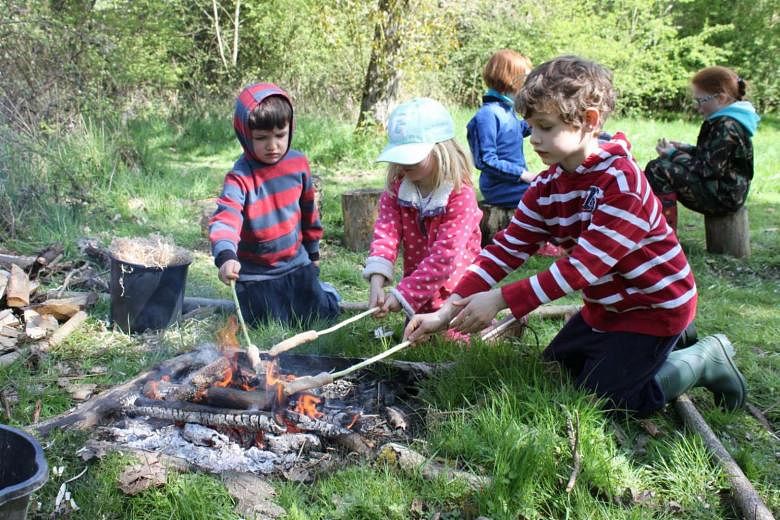As a student of Think Global School, Yuan Kelly, 18, attended classes in 12 countries over four years.
She has studied on the Galapagos Islands,tracked the Northern Lights in Sweden and practised archery in Bhutan - all part of the curriculum.
Yuan, a Canadian, is the only Singapore-based student who attends Think Global, which is in New York City.
Students and teachers from the school travel to three countries each year. The exclusive educational institution takes in only 14 students a year, The New Paper reported.
It's not all just travel though, they study hard too, and receive the International Baccalaureate (IB) diploma at the end of four years.
Here are seven other unusual schools around the world.
1 Tokyo's open-air kindergarten

The two-storey ringed structure, with trees growing through the roof, looks like a giant playground for the children.
The principal even suggested not installing safety railings on the rooftop play area. He wanted to have nets instead, to catch falling children (this was vetoed by authorities).
Architect Takaharu Tezuka said in a 2014 Ted Talk in Kyoto that some children get nervous in a "white box" and his open design means that a child can walk away from the class - but always come back because the building is a circle.
They also encourage the children to explore, climb and fall as this promotes resilience.
2 Forest schools

Popularised in Europe, forest schools are also becoming popular in the United States.
The children not only spend time with nature, they learn outdoor skills and build independence. In Denmark, it is part of the pre-school curriculum.
It is especially beneficial for children who are hyperactive and is less stressful for both the children and the educators.
A kindergarten on Pulau Tekong, anyone?
3 Floating Schools

Boat schools in Bangladesh are an innovation born of necessity. Floods can cover up to two-thirds of the low-lying country during the monsoon season.
Shidhulai Swanirvar Sangstha, founded by Mohammed Rezwan, introduced "floating schools" to Bangladeshi students in 2002.
The solar-powered boat has a classroom, a library and even Internet-linked computers. Students board at rural pickup points and then attend classes for two or three hours, six days a week, The New York Times reported.
Approximately 1,810 children attend classes on 22 school boats across the country, said a Unicef report last year.
4 Train platform schools
In India, schools were set up in slums and at railway stations so that children from the slums can have access to basic education.
Besides reading and writing, they learn about nutrition, sanitation and life skills.
Founder Iderjit Khurana noticed that many children were living at the stations, and they often turned to drugs, crime and prostitution to survive.
"My idea is to take the school to the child," said Ms Khurana.
5 Brooklyn Free School
Brooklyn Free School in New York City is described as a "democratic school".
Students can pursue their own interests and there are no compulsory grades, assessments or homework.
They are in charge of their own learning, says the school's website.
Activities can be initiated by students, or by teachers, and include writing workshops, engineering projects and creating a model United Nations.
6 Elf School
The Elf School in Reykjavik, Iceland, specialises in the "hidden folk", as Icelanders call them.
A study from 2006 found that 56 per cent of Icelanders at least believed that elves might exist.
Apart from elves, you can also learn about gnomes, fairies, trolls and dwarves at the school.
The school operates only on Fridays, and all it takes to get a certificate is attendance at a three-hour lecture.
7 Grey School of Wizardry
The real-life Hogwarts started in 2004 has classes like Alchemy & Magickal Sciences, Beast Mastery, Dark Arts, Divination, Wizardry and more, new site Vice reported.
Younger students are sorted into four houses - Gnomes, Salamanders, Sylphs, and Undines. The school's name is inspired by Gandalf the Grey, who appears in the Lord of the Ring trilogy.
There have been complains about the school's curriculum, which appear to be an undiscriminating mash up from religion, pagan lore, science fiction and fantasy.


